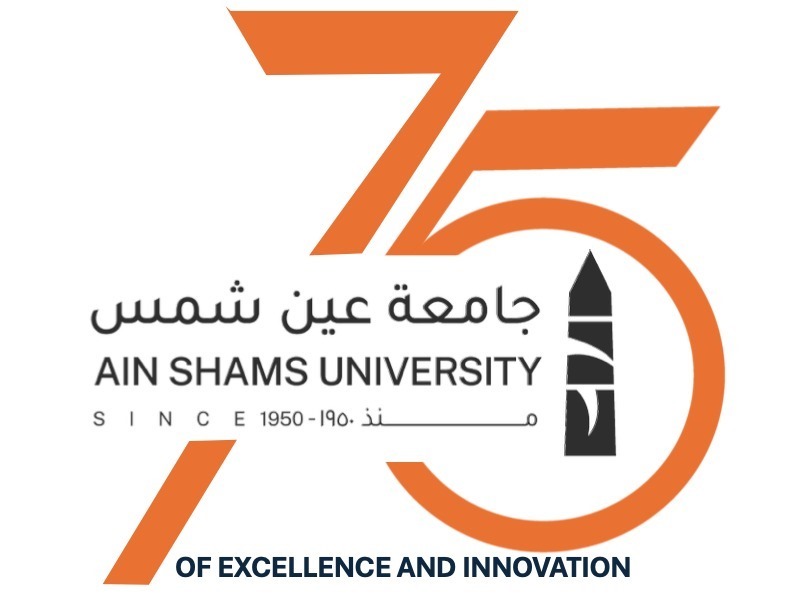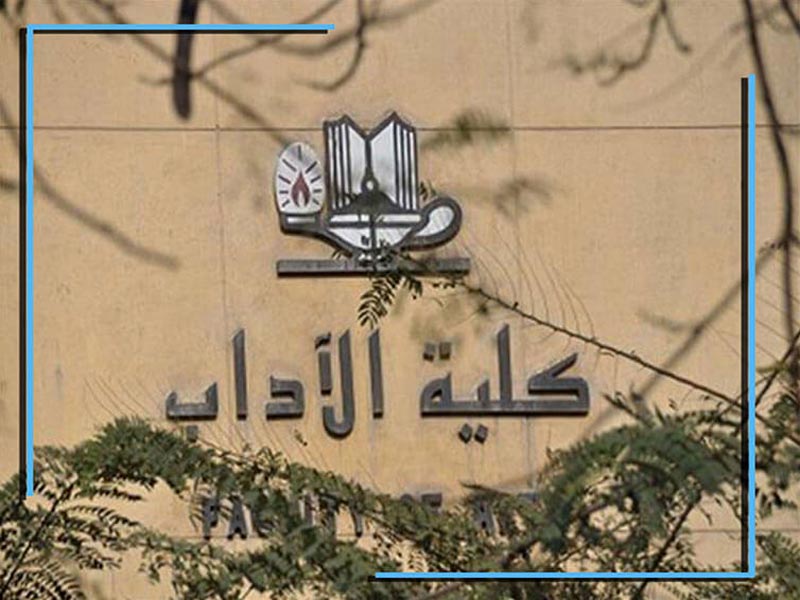A seminar entitled: "Installation of Obelisks in Egyptian Temples" Department of History, at the Faculty of Arts
The Department of History, Faculty of Arts, Ain Shams University, organized a seminar entitled: "Installation of Obelisks in Egyptian Temples", on Sunday, March 12, 2023, in the faculty's lounge, under the auspices of Prof. Hanan Kamel, Dean of the Faculty, and supervision of Prof. Khaled Hussein, Head of the History Department, and Prof. Ibrahim Mahran, Professor of the History and Civilization of Ancient Egypt, where gave a historical overview of the prehistoric Egyptians’ reverence for this stone symbol with a pointed head, which they call “bn”, which is the obelisk.
At the beginning of the dynasties, they believed that the sun emerged from this stone in the form of a bird named Banu, which appears at dawn on a sacred tree in the city of On, so they built a temple for it in it, and the Greeks united between the Banu bird and the Phoenix bird, "heron", and in the funerary temples of the pyramids of the kings of the Fifth Dynasty, The "Ben" stone symbolized the god Ra, in the form of a short and thick obelisk, placed on top of a base resembling an incomplete pyramid, and the top of the obelisk here was called bn-bn bin-bin, and with the advent of the sun doctrine, obelisks were used as an architectural element in Egyptian temples, and the oldest example is Temple of King Ni and Sir Ra in Abu Ghorab (North Saqqara).
He also clarified the origin of the word, as the Egyptians called the obelisk the name (Tekhen), a word that appeared in the texts of the Book of the Dead and in the texts of Pyramid Teti, the first king of the 6th dynasty.
The obelisk was mentioned in the Greek texts as Obelisk, and the Europeans called it Needle, and when the Arabs entered Egypt, they translated the Greek word to Obelisk (the large sewing needle).
The obelisk is an architectural element with four square sides, ending with a pyramidal top.
The obelisk is based on an independent base, on which a text may be recorded, and it is decorated with statues of monkeys cheering the rising sun.
Mahran also explained the purpose of erecting the obelisk, which is evident in the fact that the kings order the carving of obelisks to be erected in front of the main facade (the edifice), on both sides of the main entrance to the temple.
He also reviewed the importance of placing scenes and inscriptions on the sides of the obelisk in perpetuating the name of the king and his victories, even if they did not specify specific events, but it was usual to mention general characteristics, as stated on the obelisks of Ramesses II that he conquered the Asian countries, and defeated the nine arches.
Some believe that the obelisk symbolizes the rays of the sun descending from the sky, and others link the obelisk with the deity Ra, given that the sun disk (the oldest symbol of the deity Ra) was depicted on the top of the obelisk, and others believe that the pyramidal top of the obelisk plays the same role as the pyramid as a tomb, in that it is the eternal hill on which creation began.
Since the New Kingdom, the ritual of erecting two obelisks of the idol appeared, such as the two obelisks of Hatshepsut depicted on the walls of the Red Cabin in Karnak and dedicated them to her father Amun, and one of them still stands today, while the other has fallen, and part of its summit remains next to the sacred lake.
The "professor of ancient Egyptian history" also confirmed that Egyptian obelisks decorate the squares and palaces of a number of capitals of the world, including 16 Egyptian obelisks in the Italian capital, Rome alone, in addition to eight other obelisks, the most famous of which are found in major squares in the capitals of Turkey, France, England, Austria and the United States of America.
Obelisks were transported from Egypt in the early Christian era, the first of which was the obelisk of Ramesses II, which was moved from the front of the Luxor Temple, and today adorns the Place de la Concorde in Paris, while the last of which was a red granite obelisk of King Thutmose III, currently erected in Istanbul.
The obelisk consists of a single piece of solid stone, often pink granite cut from Aswan quarries, as well as a number of other obelisks made of red granite, quartzite, and basalt stones. The tops of the obelisks were flecked with pure gold or electrum (a mixture of gold and silver). Sometimes copper or bronze.
The lecturer also explained how to cut the obelisk from the stone, as the missing obelisk in Aswan provides an opportunity to study the stages of cutting the stone to make the obelisks, and the obelisk is connected to the quarry from the bottom, and its length is 41.75 m, and its weight is more than 1000 tons.
He also referred to the stages of cutting the obelisks from the rock, how to install them in the temples, the method of transporting them from the quarry and erecting them in the temple, and the methods of engraving texts and scenes.
There is an opinion that the surfaces of the obelisk were polished in the quarry, except for the lower rib, and the scenes and texts were recorded in the quarry, then the final touches were placed at the installation site, where any scratches that occurred during transportation were treated.
There is another opinion that the obelisk is transported to the site of its installation, free of inscriptions, and it is engraved there.
He also mentioned the most famous obelisks existing so far in Egypt, which are: the obelisk of Senusret I in Ain Shams, the obelisk of Thutmose I in the Karnak Temple, the obelisk of Hatshepsut in the Karnak Temple, the obelisk of Ramses II in front of the facade of Luxor Temple, the obelisk of Ramses II at the entrance to Cairo Airport, the obelisk of Ramses II In the Andalus Garden in Cairo, the obelisk of Ramesses II in the Egyptian Museum, the obelisk of Seti II in the Karnak Temple, and finally the lower part of the obelisk of Ramesses IV in the Egyptian Museum in Tahrir, along with a number of broken obelisks resting on the ground in the city of Bar Ramesses "San El Hagar".
The seminar was attended by a group of faculty staff in the department, and a large number of students of the department and postgraduate students.


.svg)




